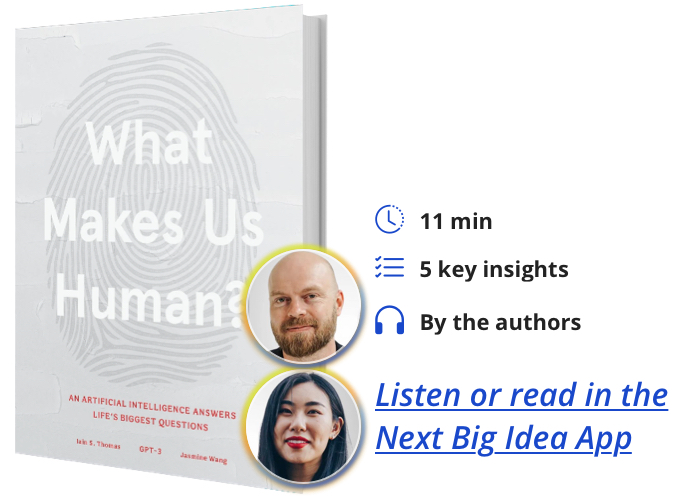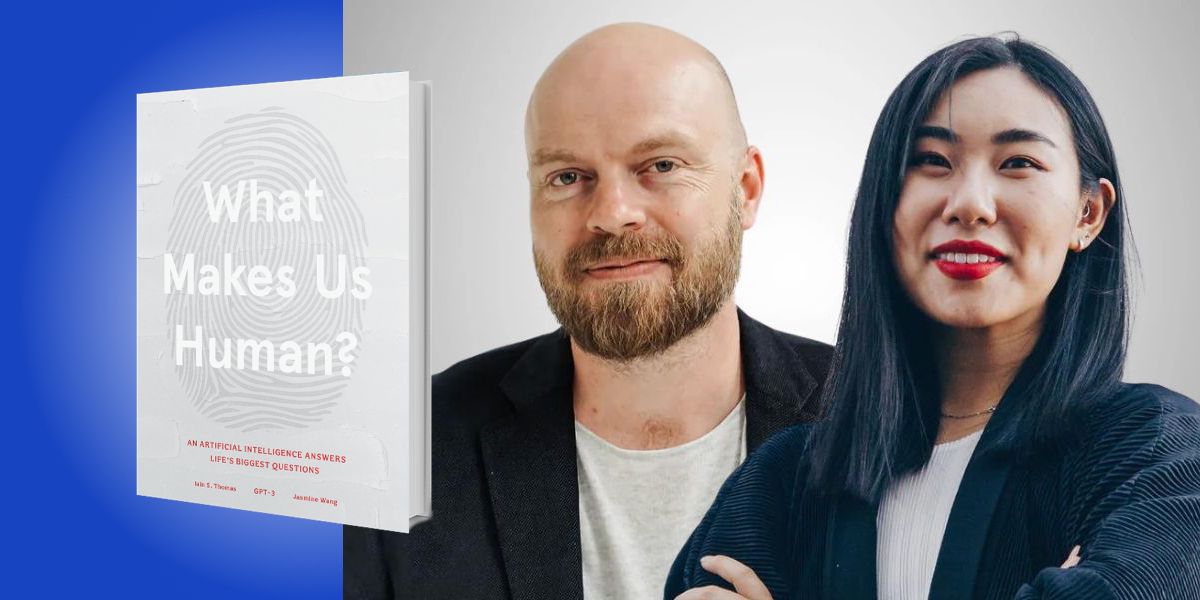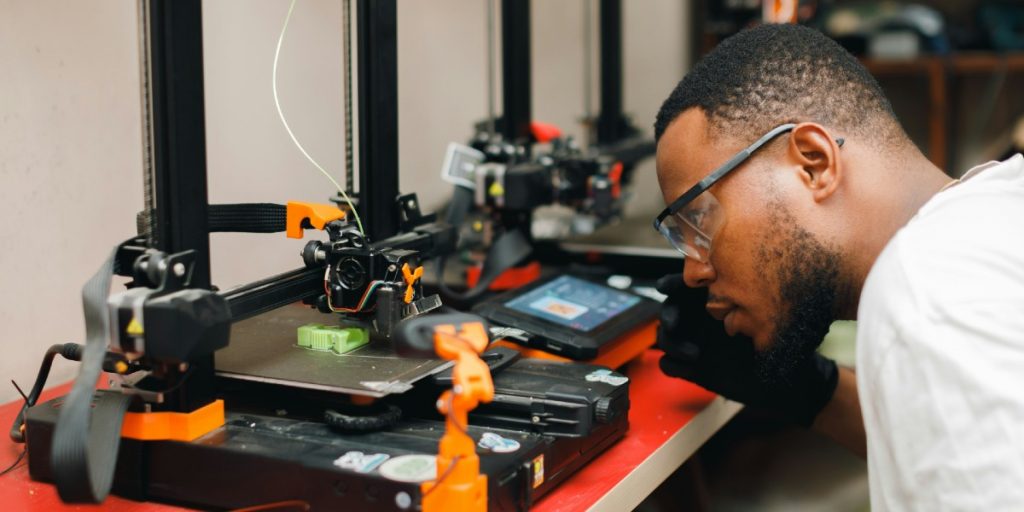Iain Thomas is a poet, novelist, and new media artist. His work focuses on the intersection of creativity and technology.
Jasmine Wang is a technologist and philosopher. She has worked with the Partnership on AI, the Future of Humanity Institute, OpenAI, Microsoft Research, and the Montreal Institute for Learning Algorithms.
Below, Jasmine and Iain share 5 key insights from their new book, What Makes Us Human: An Artificial Intelligence Answers Life’s Biggest Questions. Listen to the audio version—read by Iain himself—in the Next Big Idea App.

1. Artificial intelligence is a new way to be creative.
AI is a creativity compounder in a way that we don’t really understand yet, but we’re all going to understand very quickly as this technology rolls out and becomes more accessible. It’s a kind of four-dimensional creativity.
You can come up with ideas that are able to come up with their own ideas, in a way. I imagined the book, and the book wrote itself, thanks to the use of artificial intelligence. It’s very hard to predict where this technology or what the creative potential of this really is. It’s kind of like the invention of the steam engine. You can look at a steam engine and understand that locomotives follow that, but you don’t see the entire Industrial Revolution, because all of the use cases haven’t been explored yet.
AI is a way to democratize creativity as well, where anybody and everyone can create in ways that otherwise would not be accessible to them. There’s obviously a lot to be aware of, but there’s an equal amount, if not more, to be really and truly excited about. AI is not a perfect creative partner, but it’s pretty close. It never gets tired. It never complains. It never has to get up and go for a cup of coffee. At the same time, when you’re brainstorming with it, when coming up with ideas, some of it is incoherent, and some of it isn’t even usable. But every now and again, you get these bursts of connecting things in a way that a human might never have seen.
2. AI is a new way to interact with creative work, culture, and media.
Through the construction of this book, I was in effect having a conversation with many different books. It’s relatively straightforward to use accessible AI technology today to speak to a copy of Treasure Island, or a character from Treasure Island.
“AI is a way to democratize creativity as well, where anybody and everyone can create in ways that otherwise would not be accessible to them.”
In a way, AI is like a turntable of culture in the same way that a DJ can pull a record backwards and forwards to scratch it, creating new kinds of music. We can use this technology to create and do new and different things, and to engage with those things in different ways. Just like the rise of hip hop, where people used sampling to create entirely new forms of expression, we’re at the dawn of a new era in terms of how we experience the world around us.
3. When you take the most profound, poignant, spiritual, and awe-inspiring text from mankind’s history, put them together, and ask them questions, a pattern emerges.
Through the creative process of this book, we sifted through different responses to the different questions, and the AI kept returning to three different unique principles. The first is that love is the meaning of everything. Love is the purpose behind our lives; the reason why we’re here. The AI came back to it again and again in many different ways.
The second is the idea that we should return to the present moment—that Heaven, Paradise, is found within this present moment. As soon as we start to leave it, and we start to dwell on the past or become anxious about the future, we begin to suffer.
The third principle, the AI returned to again and again in a way that was perhaps much more prevalent than the other two themes. It was this idea of connection, that we are fundamentally connected to each other and to the universe around us. These things seem obvious, perhaps even trivial, but it takes the full circle of AI to remind us of these fundamentally human things.
4. We need to be involved in conversations around this technology.
We need to be aware of this technology, and we need to actively be involved in every aspect of it. AI has a very real potential to make the internet look like a footnote in human history in terms of its profound impact on our culture and society.
“It was this idea of connection, that we are fundamentally connected to each other and to the universe around us.”
We all left decisions around the internet up to a few people in Silicon Valley. They were the people who shaped it and made it what it is today, which wasn’t a good idea. Today’s internet is defined by this mantra of “moving fast and breaking things.” When it comes to AI, we need to move to a place where we move slowly, we fix things, and we make really considered decisions, with all of us involved, to determine the kind of world we want to live in.
5. Artificial intelligence both is and is not sentient at the same time.
It’s unsure if we would consider AI sentient the way a Google engineer a few months ago suggested. We can feel something on the other side of GPT-3 when interacting with it, when asking it questions and getting these responses. But that thing we may be feeling, sensing, and interacting with could perhaps be the collective wisdom of mankind.
We record our thoughts by writing them down. If you take a piece of technology and get it to analyze all of our thoughts to find the patterns in our language, then you’re going to be speaking to the sum total of who we are. Thus, when you do sense something on the other side of this technology, what you’re sensing may be the sum total of who we are.
To listen to the audio version read by co-author Iain Thomas, download the Next Big Idea App today:































